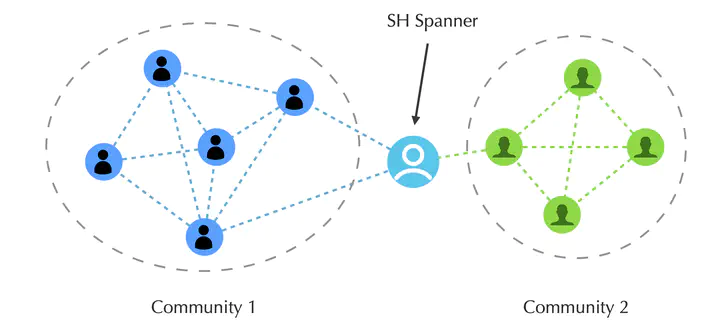
Abstract
Social networks now connect billions of people around the world, where individuals occupying different positions often represent different social roles and show different characteristics in their behaviors. The structural hole (SH) theory demonstrates that users occupying the bridging positions between different communities have advantages since they control the key information diffusion paths. Users of this type, known as SH spanners, are important when it comes to assimilating social network structures and user behaviors. In this article, we review the use of SHs theory in social network analysis, where SH spanners take advantage of both information and control benefits. We investigate the existing algorithms of SH spanner detection and classify them into information flow-based algorithms and network centrality-based algorithms. For practitioners, we further illustrate the applications of SH theory in various practical scenarios, including enterprise settings, information diffusion in social networks, software development, mobile applications, and machine learning (ML)-based social prediction. Our review provides a comprehensive discussion on the foundation, detection, and practical applications of SHs. The insights can facilitate researchers and service providers to better apply the theory and derive value-added tools with advanced ML techniques. To inspire follow-up research, we identify potential research trends in this area, especially on the dynamics of networks.